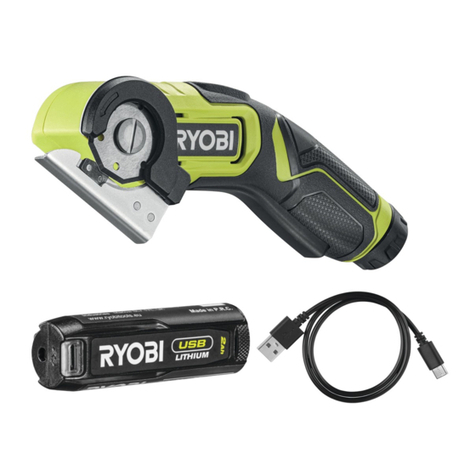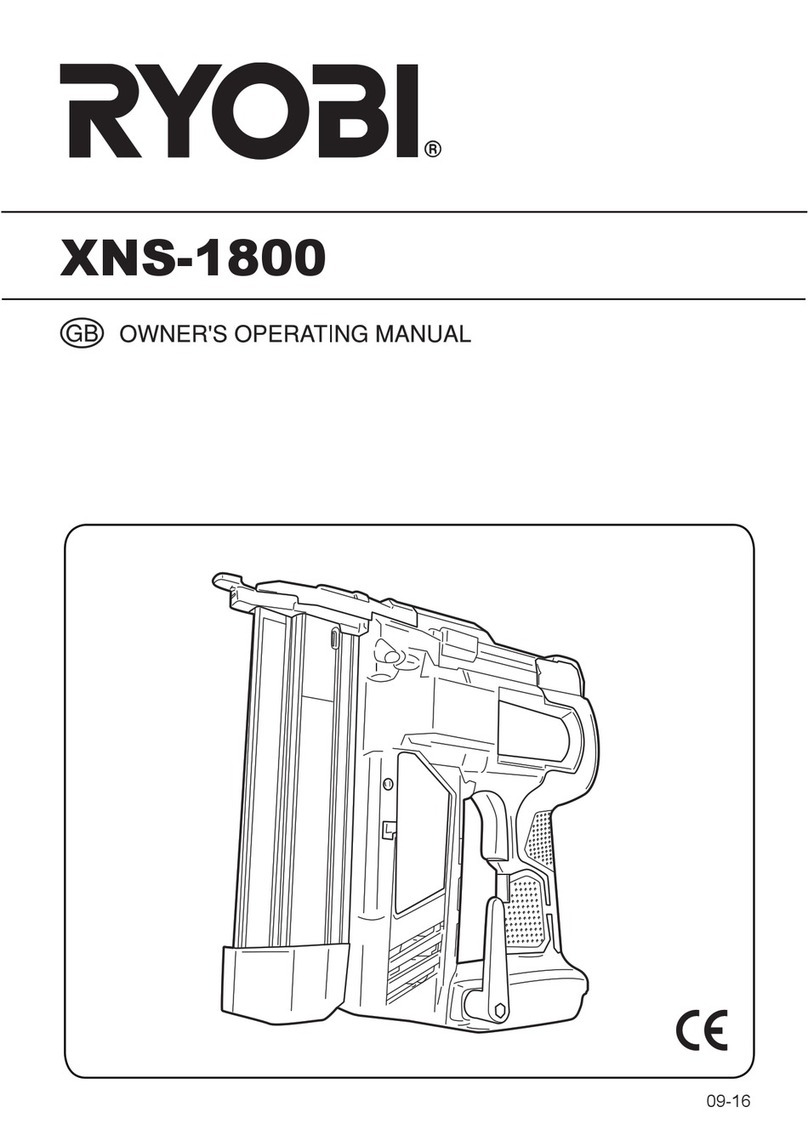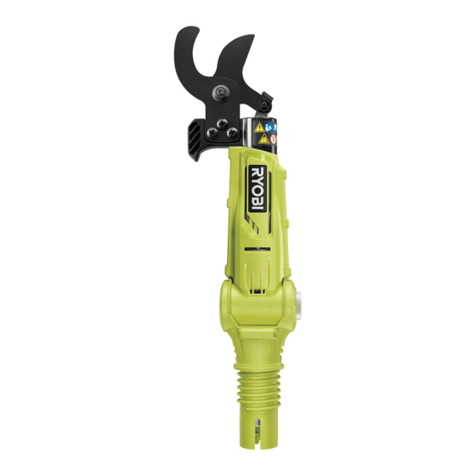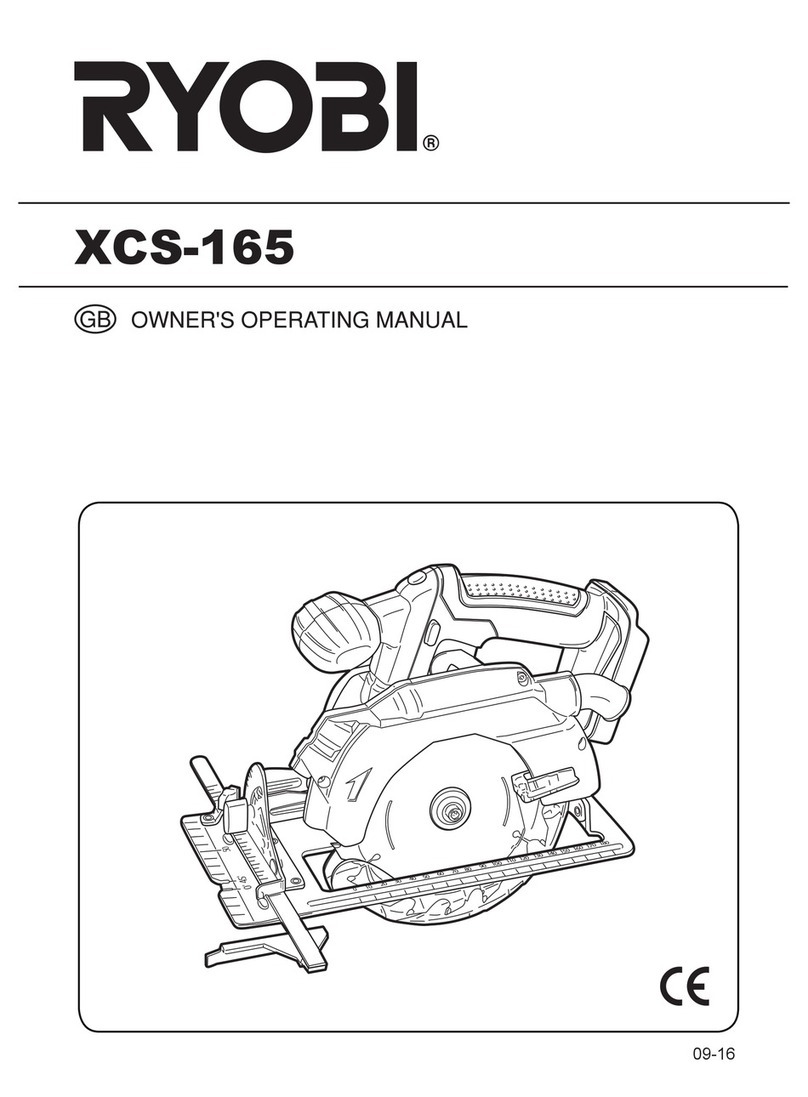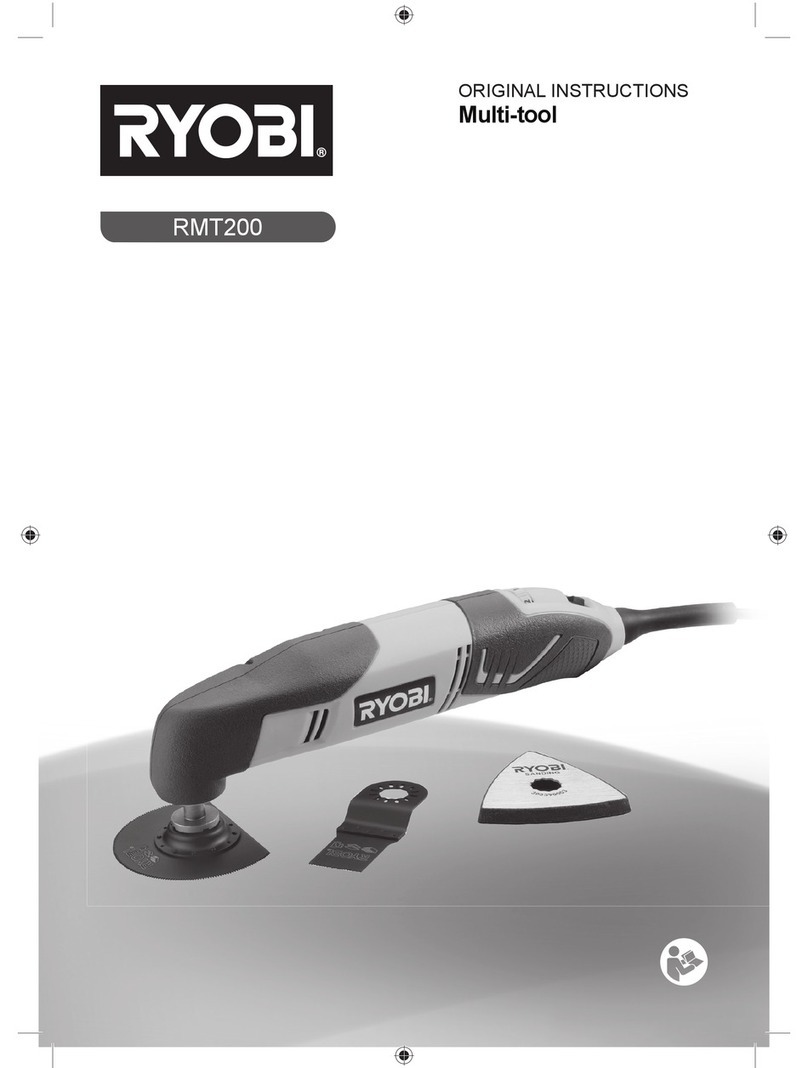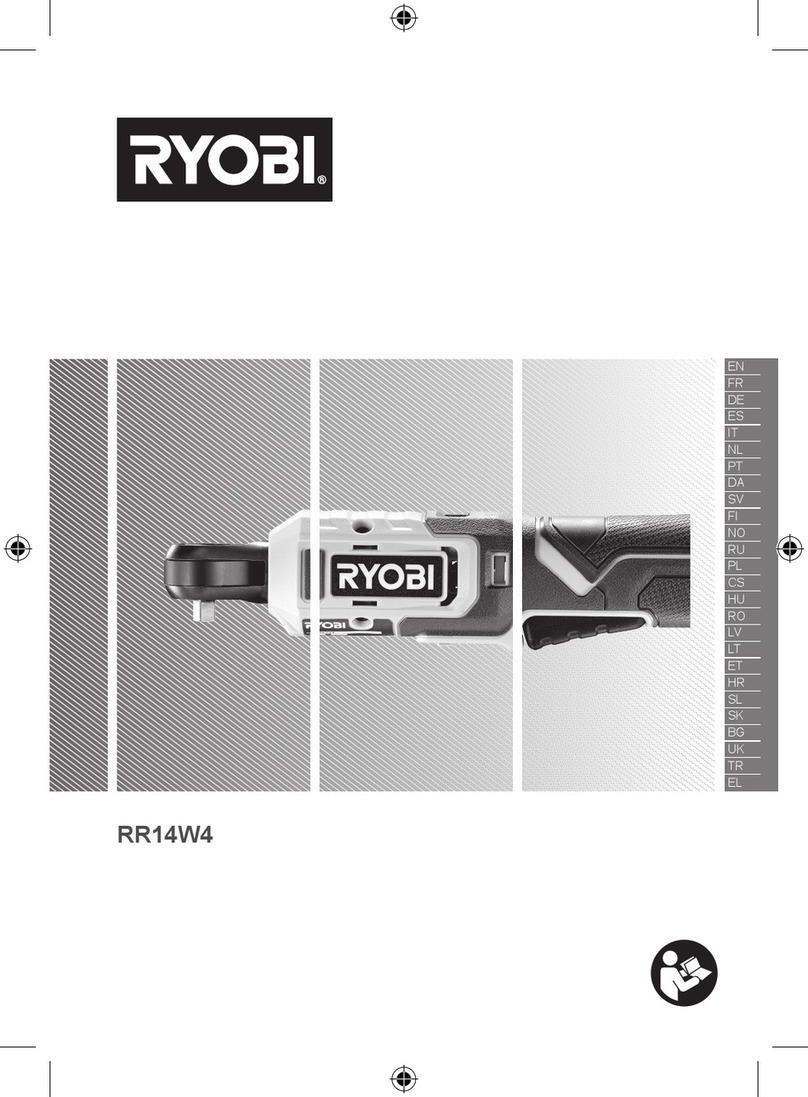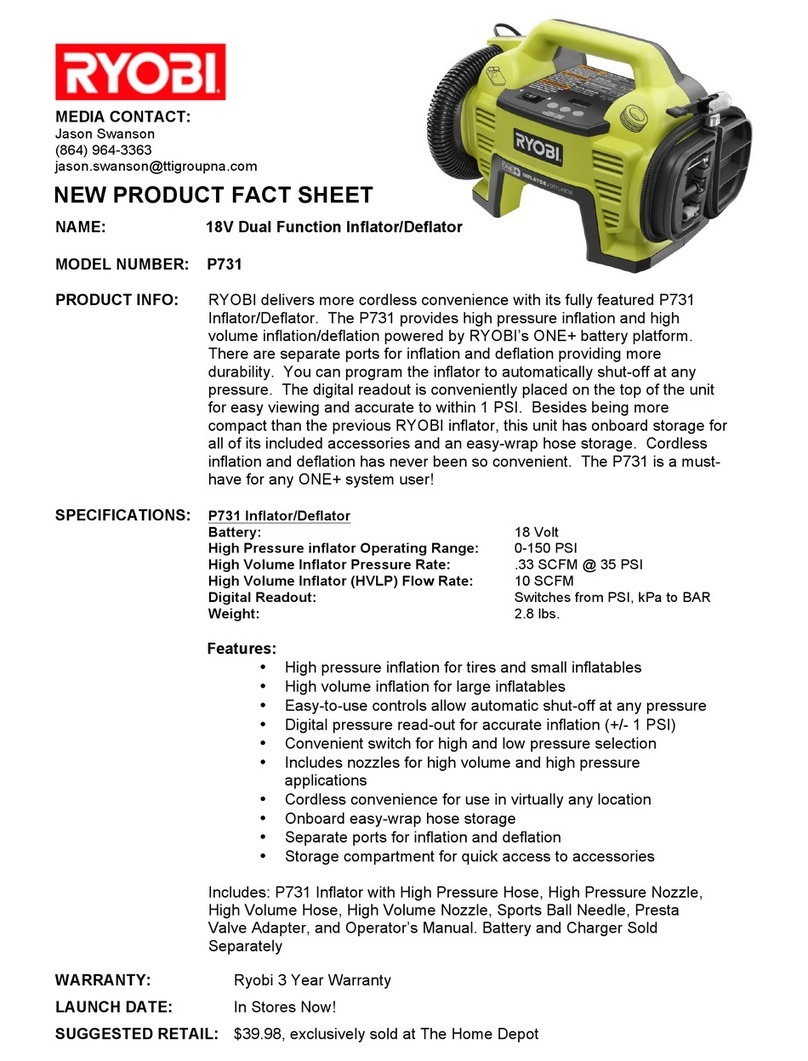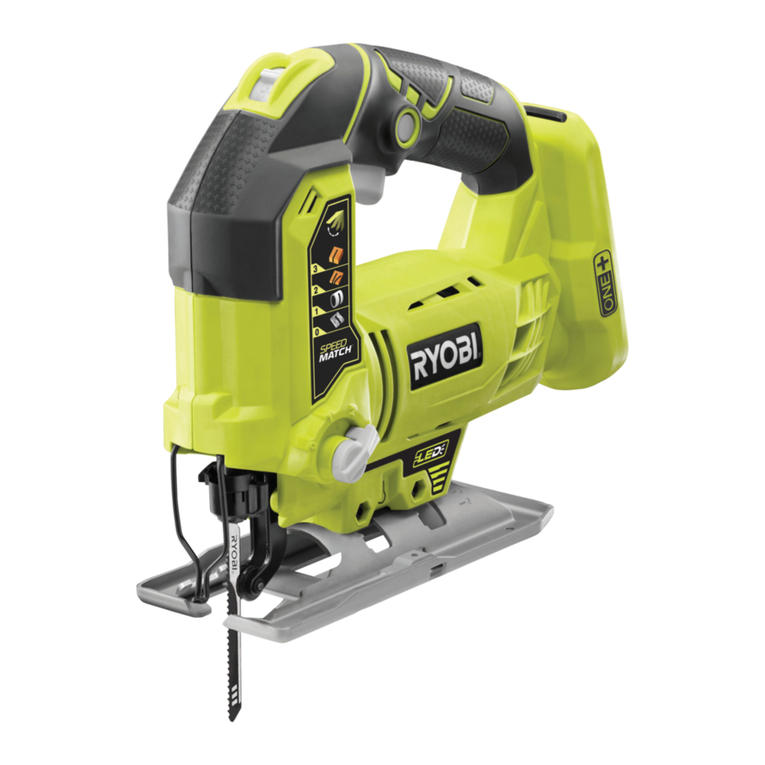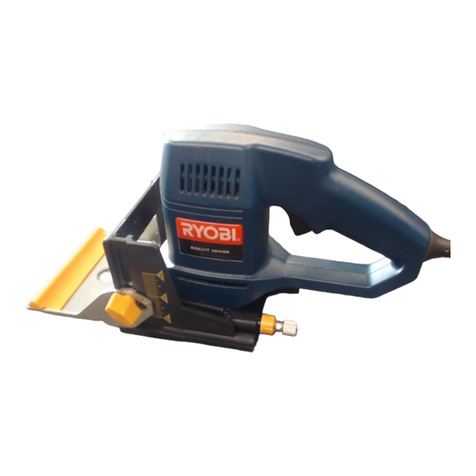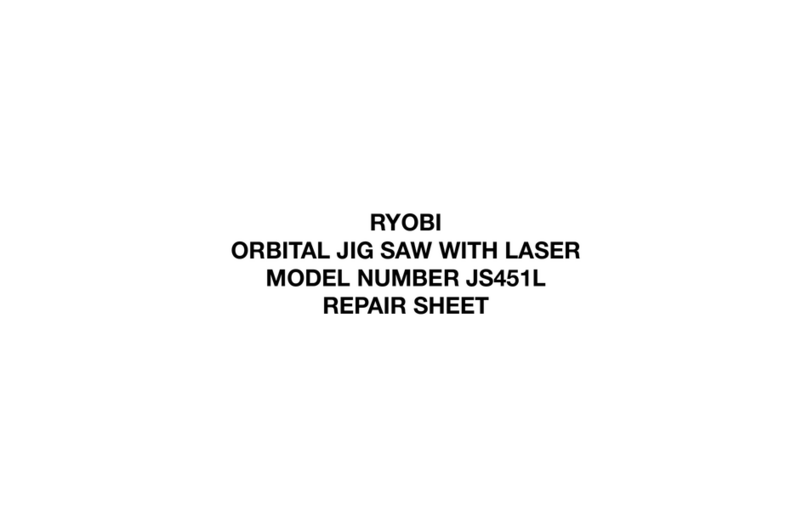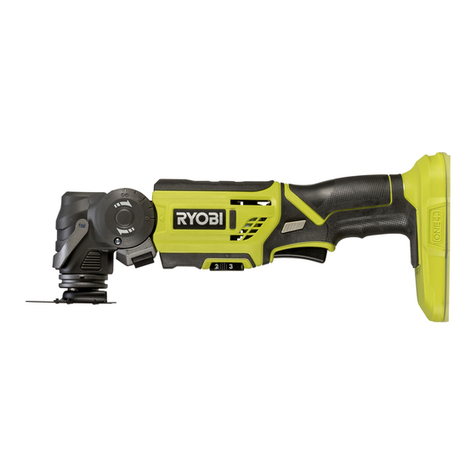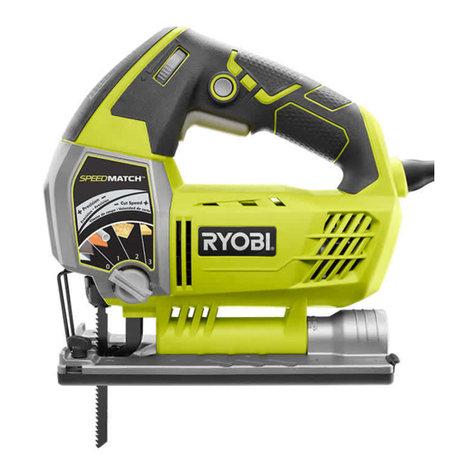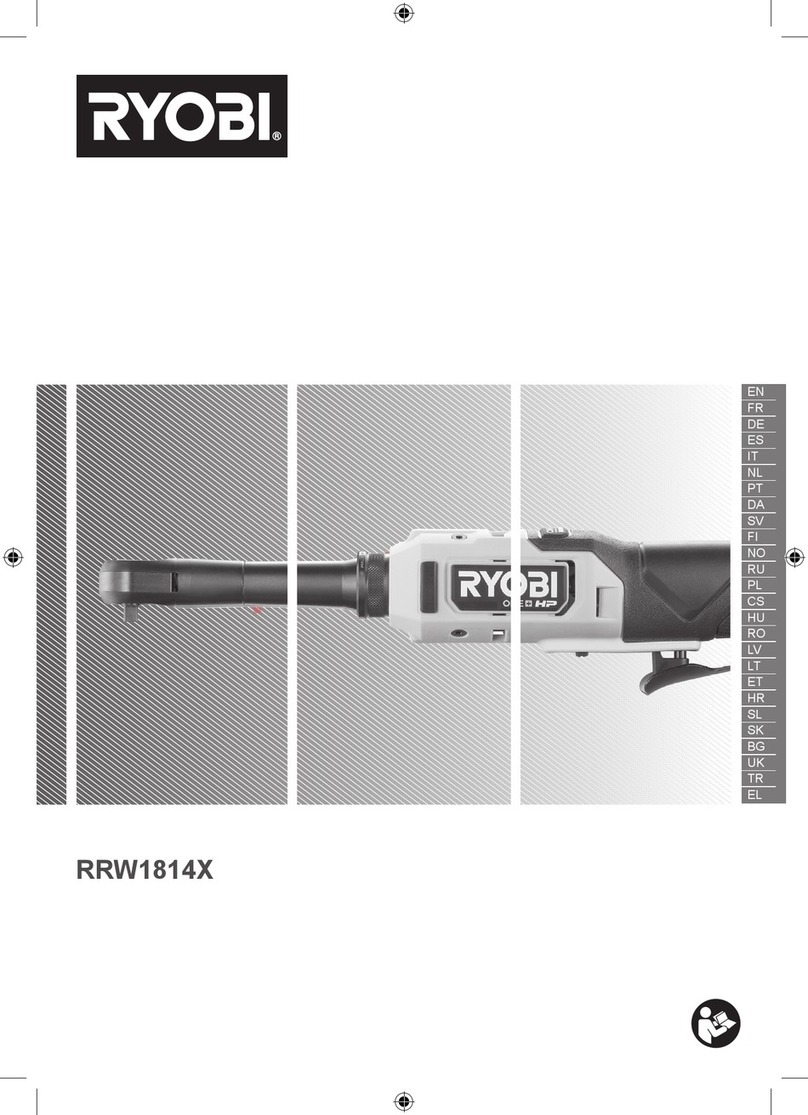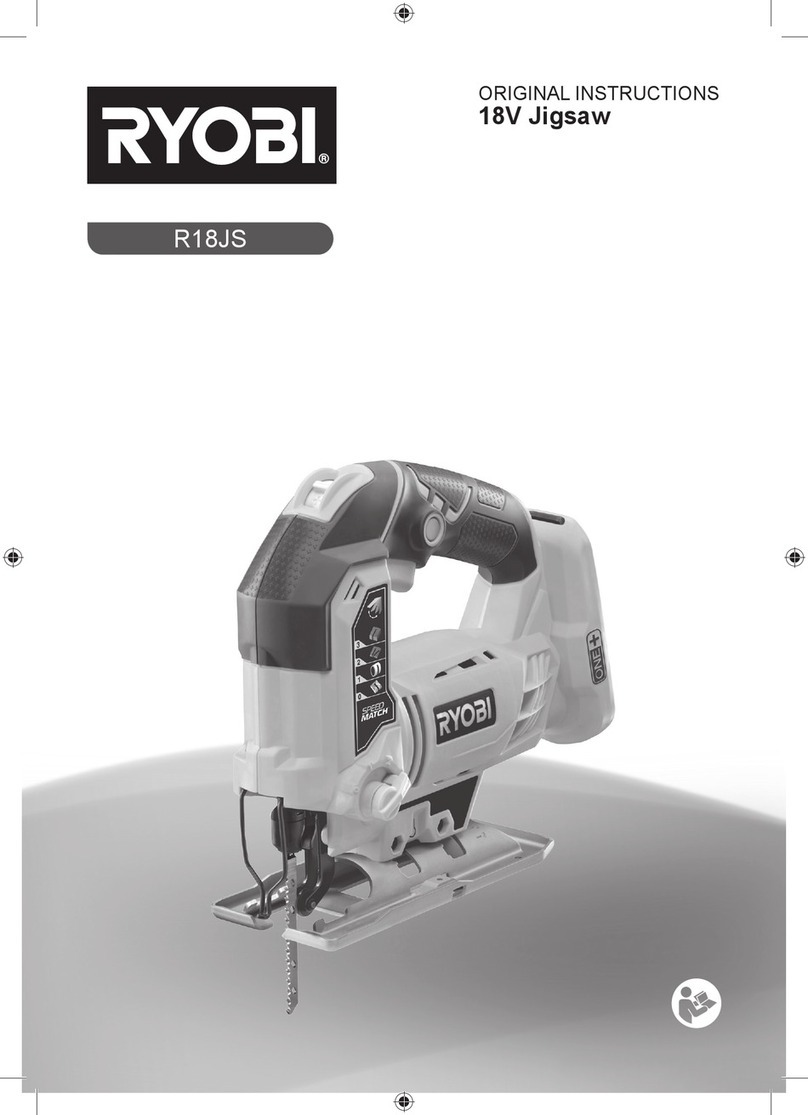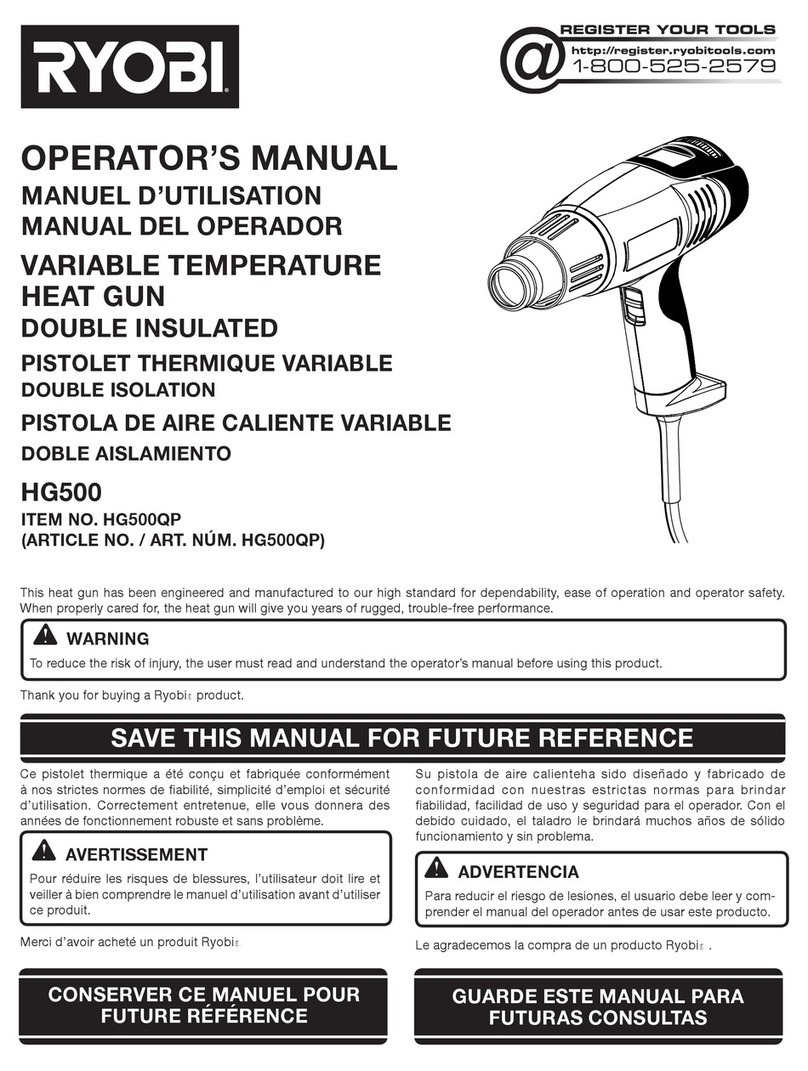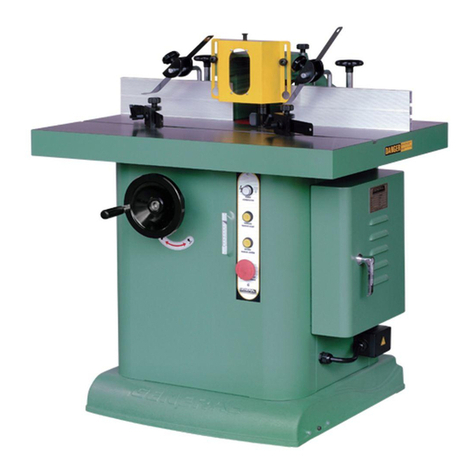POWER TOOL USE AND CARE
■Do not force the power tool. Use the correct power
tool for your application. The correct power tool will
do the job better and safer at the rate for which it was
designed.
■Do not use the power tool if the switch does not turn
it on and off. Any power tool that cannot be controlled
with the switch is dangerous and must be repaired.
■Disconnect the plug from the power source and/
or remove the battery pack, if detachable, from
the power tool before making any adjustments,
changing accessories, or storing power tools. Such
preventive safety measures reduce the risk of starting
the power tool accidentally.
■Store idle power tools out of the reach of children
and do not allow persons unfamiliar with the power
tool or these instructions to operate the power tool.
Power tools are dangerous in the hands of untrained
users.
■Maintain power tools and accessories. Check for
misalignment or binding of moving parts, breakage
of parts and any other condition that may affect the
power tool’s operation. If damaged, have the power
tool repaired before use. Many accidents are caused
by poorly maintained power tools.
■Keep cutting tools sharp and clean. Properly
maintained cutting tools with sharp cutting edges are
less likely to bind and are easier to control.
■Use the power tool, accessories and tool bits etc.
in accordance with these instructions, taking into
account the working conditions and the work to
be performed. Use of the power tool for operations
different from those intended could result in a
hazardous situation.
■Keep handles and grasping surfaces dry, clean
and free from oil and grease. Slippery handles and
grasping surfaces do not allow for safe handling and
control of the tool in unexpected situations.
SERVICE
■Have your power tool serviced by a qualified repair
person using only identical replacement parts.
This will ensure that the safety of the power tool is
maintained.
MULTI-TOOL SAFETY WARNINGS
■Always hold power tools by insulated gripping surfaces
only. The cutting accessory may contact hidden wiring
or its own cord. Cutting accessory contacting a “live”
wire may make exposed metal parts of the power tool
“live” and could give the operator an electric shock.
■Always wear safety goggles while operating the tool.
Wear a dust mask when dust is produced.
■The product will restart automatically if stalled.
WARNING
Dust from certain paints, coatings, and materials may
cause irritation or allergic reactions. Dust from wood
such as oak, beech, MDF, and others are carcinogenic.
Only qualified specialists should be allowed to use the
product on materials containing asbestos.
WARNING
The product should never be connected to a power
supply when assembling parts, making adjustments,
cleaning, performing maintenance, or when not using
it. Disconnecting the product from the power supply
will prevent accidental starting that could cause serious
injury.
■Keep mains lead clear from the working range of the
power tool. Always lead the cable away and behind
you.
■When working in walls, ceilings or floors, take care to
avoid electric cables and gas or water pipes.
WARNING
Metallic accessories will become hot during use and
could result in skin burns if contacted by the operator.
Wear gloves when changing accessories. Take care
when setting down the tool between operations to
prevent damage or injury.
■Do not use cutting accessories which are damaged,
cracked or do not fit securely to the product.
■Whenever possible, fit the dust collection accessory
provided and connect it to a vacuum device to remove
dust from the work area and help prevent potential
respiratory irritation and damage to the tool.
■The multi-tool creates vibrations which move the
accessory. The vibrations may cause discomfort if the
product is operated for long periods of time. Take a rest
often, especially if you feel discomfort in the arm, wrist,
or fingers. Choose a speed setting which will get the
work completed efficiently. Read the Residual Risks
and Risk Reduction sections for more information on
vibration-related injury.
ADDITIONAL SAFETY WARNINGS
■We recommend the use of a residual current device
with a residual current rating of 30 mA or less.
■Switch the device off immediately if the insertion tool
stalls! Do not switch the device on again while the
insertion tool is stalled, as doing so could trigger a
sudden recoil with a high reactive force. Determine why
the insertion tool stalled and rectify this, paying heed to
the safety instructions.
●The possible causes may be:
–it is tilted in the workpiece to be machined
–it has pierced through the material to be machined
–the power tool is overloaded
2

